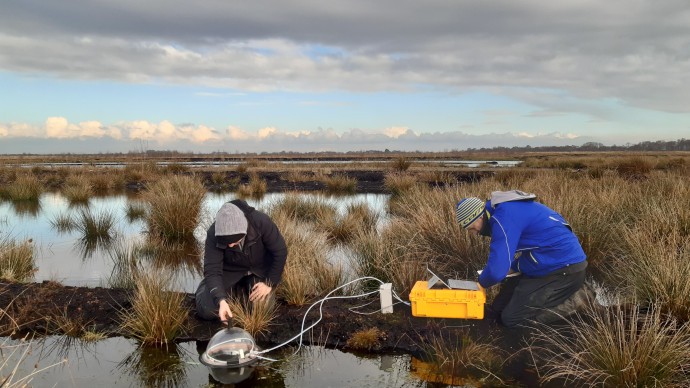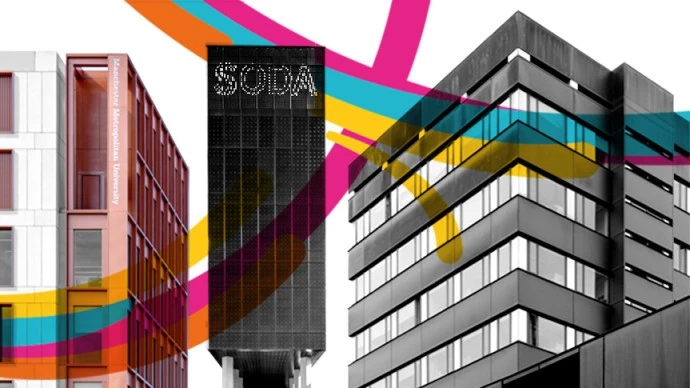Greening the city – Manchester’s changing climate
Header image

Standfirst
On a typical wet day in Manchester every conversation can seem to open about the weather.
It’s hard to know whether the complaints constitute the usual cheerful moaning about the weather that Brits specialise in, or if the seasons are genuinely becoming less predictable.
What is certain is that, with greenhouse gas emissions at their highest levels in two million years and rising, the earth is around 1.1°C warmer than it was in the 1800s.
Main story
The last decade was the warmest on record, but it’s not just temperatures that tell the story of climate change, which is also now starting to be felt through droughts, water scarcity, rising sea levels, fires, flooding, melting polar ice, storms and declining biodiversity.
If it feels like climate disasters are happening in far-flung lands, that’s not the complete picture. Right here in Manchester, we are already starting to experience climate change, with heatwaves, increased rainfall and risk of flooding the earliest harbingers of the threats to come.
As Dr Paul O’Hare, Senior Lecturer in Geography and Development, sits down against a backdrop of leaden skies, views of the city stretch out behind him from the new Dalton building.
The cityscape is significant to Dr O’Hare, who works on climate resilience and adaptation with the Manchester Climate Change Agency, drafting the climate resilience and adaptation policy on behalf of the city.
Adapt and change
Climate change mitigation focuses on driving down emissions to limit the impact of climate change, but Dr O’Hare’s work focuses on climate change adaptation, which identifies the interventions that could be put in place to begin to manage the implications of climate change that we are already starting to experience.
“In terms of climate change adaptation, it’s about identifying what the impacts will be. Vital to this is conducting comprehensive risk assessments right across all sectors of the city,” Dr O’Hare says.
“From health to education, we’re working to identify strategies to adapt to those potential impacts. From a very practical perspective, that will be identifying how we might be able to introduce more greenery into the city: trees and vegetation that can soak up rainfall, but also making sure that the trees we plant will still be alive in 100 years’ time, when the climate has changed.
“Beyond that, we need rainwater harvesting; capturing the rain that falls onto our buildings and using that rain instead of putting it into the drainage system, which could potentially be overwhelmed in the future.”
City planning is one half of the equation, but there’s also plenty residents can do to help the city cope with the changing climate.
Dr Gina Cavan, Senior Lecturer in Geographic Information Systems and Climate, studies the relationships between climate, nature and people, and how we can become more climate-resilient.
Dr Cavan worked on the My Back Yard Project, conducted by Manchester Metropolitan and Natural England, with the collaboration of Manchester City Council. The project gathered evidence about the impact that domestic gardens have on urban green space and the benefits they provide, evidence that plays a key role in climate adaptation and mitigation.
“The My Back Yard project is all about green spaces, which are essential to healthy, functioning cities,” says Dr Cavan. “They provide benefits like helping to cool the air, improve air and water quality and absorb water, and those benefits help us to cope with climate risks like flooding, air pollution and the urban heat island.
“Gardens are really important in cities, making up around 20 to 25% of the total land area. Before we did this research, it was assumed that they were all green because no better evidence existed, but of course, we knew that wasn’t the case because people pave over driveways and have greenhouses and sheds in their gardens.
The power is in our hands
“We developed a novel method that engaged the public and received responses from around 1000 people, combining that with detailed aerial imagery to give us a picture of every garden and the amount of green space in it.
“From that we found that an average garden in Manchester was only 50% green space because some of those gardens have been wholly or partly paved over for driveways and patios et cetera, which has a big impact on the amount of green space.
“Across the city, it was previously estimated at 58%. When we take out that gardens aren’t completely green, we reduce that to 49%, which has a big impact on the city. We then worked with our project partners and other stakeholders to develop an action plan about how we can work together to re-green gardens.”
With 20% of the city’s green space in our gardens, the contribution residents can make to combat the impacts of climate change is significant. The project led to thousands of pledges from Manchester residents to take positive action, with 85 to 95% then taking action in their garden within a year.
Dr Cavan is now working on a survey to discover how people are using their gardens and the impact that has on the type of surface cover in their gardens.
“Each and every garden makes a difference, and the best thing that people can do is make their garden as green as possible, ideally by replacing hard surfaces with vegetation and green space so that it can be more resilient to flooding, drought and other weather, but also for people to enjoy their garden – it should be a place that they can enjoy to improve their health and well-being as well.” she says.
In terms of combatting climate change, the power is really in everyone’s hands.
How green is the average Manchester garden?
Gardens make up one-fifth of the city. But an average garden has only 50% green space. If there was more green space, it would help combat flooding, provide relief from high temperatures, tackle pollution and support wildlife.
The average garden in numbers
- 34% concrete, paving and tarmac
- 17% trees
- 14% mown grass
- 10% gravel, decking and artificial grass
- 9% shrubs
- 8% cultivated land
- 5% bare soil
- 2% long grass
- 1% buildings
- under 1% water

More stories
Discover more of our research
-
![An aeroplane taking off, seen from inside an empty passenger lounge]()
Cleaner and greener flying
Find out more -
![A researcher operating one of the machines in the Manchester Fuel Cell Innovation Centre]()
The future of clean power
Find out more -
![Researchers taking measurements from a peat bog in the Peak District]()
A natural solution
Find out more -
![Professor Liz Barnes, head of Manchester Fashion Institute, in a fashion room]()
A circular future
Find out more -
![A Golden Parakeet with its wings spread in the air]()
All creatures great and small – protecting biodiversity
Find out more
About 200 years
Manchester Met celebrates two centuries of driving progress through excellent education and research.
-
![200 years 1824-2024]()
200 years
Find out more -
![Siemens Chief Executive Carl Ennis posing with the firms degree apprentices]()
Driving economic growth
Find out more -
![Two nurses standing together and smiling]()
Transforming health
Find out more -
![A digital image of the university's arts buildings]()
Championing creative excellence
Find out more









